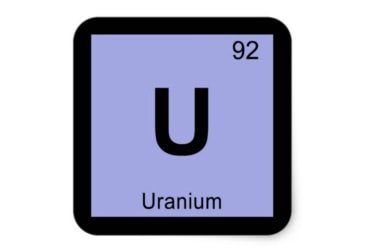
Scientists are developing a new way of extracting uranium from seawater, an advance that may help countries that lack resources to harness nuclear power from the oceans.
Researchers have long known that uranium dissolved in seawater combines chemically with oxygen to form uranyl ions with a positive charge.
Extracting these uranyl ions involves dipping plastic fibers containing a compound called amidoxime into seawater. The uranyl ions essentially stick to the amidoxime.
When the strands become saturated, the plastic is chemically treated to free the uranyl, which then has to be refined for use in reactors just like ore from a mine.
How practical this approach is depends on three main variables - how much uranyl sticks to the fibres, how quickly ions can be captured and how many times the fibres can be reused.
Researchers from Stanford University in the US improved on all three variables: capacity, rate and reuse.
Their key advance was to create a conductive hybrid fibre incorporating carbon and amidoxime.
By sending pulses of electricity down the fibre, they altered the properties of the hybrid fibre so that more uranyl ions could be collected.
Researchers supervised lab tests that compared Stanford's amidoxime-carbon hybrid fibres with today's amidoxime fibres.
The extent of uranyl each type of fibre could hold before reaching saturation was tested.
By the time the standard amidoxime fibre had become saturated, Stanford's amidoxime-carbon hybrid fibres had already adsorbed nine times as much uranyl and were still not saturated.
The electrified fibre captured three times as much uranyl during an 11-hour test using seawater from Half Moon Bay, about an hour from Stanford and had three times the useful lifespan of the standard amidoxime.
Trace amounts of uranium exists in seawater, but efforts to extract that critical ingredient for nuclear power have produced insufficient quantities to make it a viable source for those countries that lack uranium mines.
A practical method for extracting that uranium, which produces higher quantities in less time, could help make nuclear power a viable part of the quest for a carbon-free energy future.
Researchers believe that a practical way to extract uranium from seawater is needed to reduce the energy insecurity of nations that depend on nuclear power but lack uranium within their own borders.
Uranium: Know More- Symbol: U
- Atomic number: 92
- Atomic mass: 238.02891 u ± 0.00003 u
- Electron configuration: [Rn] 5f36d17s2
- Discovered: 1789
- Melting point: 1,132°C
- Discoverer: Martin Heinrich Klaproth